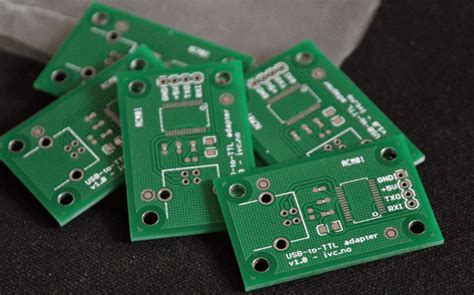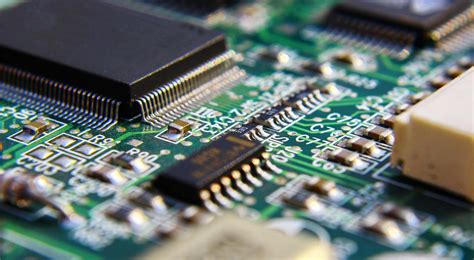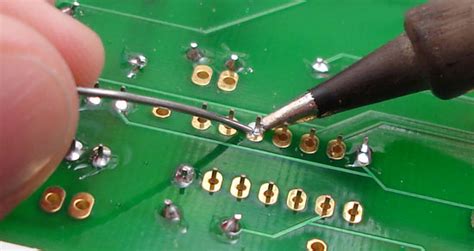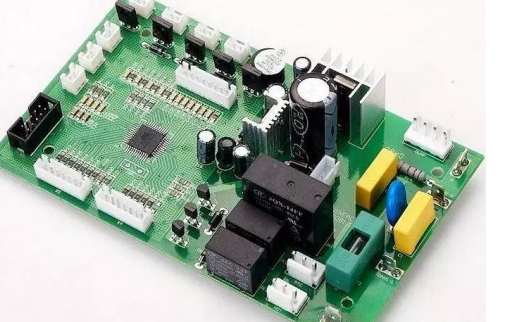Revolutionizing Electronics with Digital PCB Assembly Techniques

Key Takeaways
Digital PCB assembly techniques represent a significant leap forward in the electronics manufacturing sector, driving a transformation that merges efficiency with precision. Unlike traditional methods, digital PCB assembly leverages advanced technologies to streamline production processes, resulting in PCBA with enhanced reliability and lowered production costs. The use of automated systems and software for circuit design not only minimizes human error but also improves turnaround times. By adopting these innovative methods, manufacturers can meet the increasing demands for complex electronic devices that require meticulous attention to detail.
Furthermore, the ability to quickly adapt designs in response to market changes is a critical advantage of digital assembly. This adaptability fosters an environment where iteration is possible without significant delays or additional expenses. As highlighted by industry leaders, “> Embracing digital innovations in PCB assembly can lead to unprecedented levels of accuracy and efficiency in electronic manufacturing.” The future of electronic components is thus heavily influenced by these revolutionary techniques, setting new standards for quality and performance in the field.

Introduction to Digital PCB Assembly Techniques
In today’s rapidly evolving electronics landscape, digital PCB assembly techniques are paving the way for significant advancements in manufacturing processes. This shift from traditional methods to more automated and efficient strategies has transformed how PCBA (Printed Circuit Board Assembly) is conducted. Digital techniques streamline the assembly process by integrating software-driven operations that enhance precision and reduce human error. This integration not only accelerates production times but also improves the overall quality of the assembled products. As a result, manufacturers are able to deliver high-performance circuit designs that meet the growing demands of various applications, ranging from consumer electronics to industrial systems. Furthermore, with improved tooling and advanced imaging systems employed in pcb assembly, teams are able to optimize layouts and minimize material waste, addressing both economic and environmental concerns in manufacturing. The adoption of these innovative methods signifies a transformative era for the electronics industry, reflecting a commitment to quality and sustainability while meeting the complex needs of modern technology.

The Evolution of Electronics: From Traditional to Digital Assembly
The transition from traditional methods to digital PCB assembly techniques marks a monumental shift in the electronics industry. In the past, PCB assembly relied heavily on labor-intensive processes that often resulted in slower production times and increased chances of human error. These traditional methods, though effective, presented challenges in terms of scalability and reproducibility. The advent of digital techniques has addressed these challenges, introducing a new era of efficiency and accuracy.
Digital PCBA processes utilize advanced software and automated systems that streamline the assembly procedure. This integration not only accelerates production but also enhances the ability to create complex circuit designs with precision that was previously unattainable. For instance, the use of automated optical inspection (AOI) ensures that each component is accurately placed and verified against design specifications before moving on to further assembly steps.
Below is a comparison table highlighting key differences between traditional assembly methods and digital PCB assembly techniques:
| Aspect | Traditional PCB Assembly | Digital PCB Assembly |
|---|---|---|
| Production Speed | Slower | Significantly Faster |
| Error Rate | Higher | Lower Due to Automation |
| Design Complexity | Limited | High Complexity Supported |
| Scalability | Difficult | Easily Scalable |
| Quality Control | Manual Inspection | Automated Inspections |
As we progress through this digital transformation, it is clear that pcb assembly is evolving beyond simple component placement; it now encompasses an intricate network of automated systems designed for enhanced accuracy and efficiency. This shift not only mandates a re-evaluation of manufacturing processes but also lays the foundation for innovative designs that drive product development forward in an increasingly competitive market.

Key Benefits of Digital PCB Assembly in Modern Manufacturing
The shift towards digital PCB assembly has introduced a multitude of advantages that significantly enhance modern manufacturing processes. One of the primary benefits is the increase in operational efficiency. By utilizing advanced automation technologies, manufacturers can streamline their production lines, reducing both costs and time associated with traditional assembly methods. Furthermore, the precision offered by digital techniques leads to improved product quality, minimizing the likelihood of defects and ensuring that each unit meets stringent industry standards. Enhanced data analytics capabilities enable real-time monitoring and adjustments, allowing for proactive problem-solving during the manufacturing phase. This not only boosts productivity but also fosters a more agile response to market demands. In terms of scalability, digital methods allow for easier adaptation to varying production volumes without compromising quality, thus supporting companies looking to innovate and expand their offerings in an increasingly competitive landscape. As the electronics industry evolves, embracing these digital PCB assembly techniques will be crucial for staying ahead and meeting consumer expectations effectively.
Innovative Methods Shaping Digital PCB Assembly Processes
The advancement of digital PCB assembly technologies has introduced a variety of innovative methods that are significantly transforming traditional practices in electronic manufacturing. One notable technique is the implementation of automated assembly systems that utilize robotics and artificial intelligence to enhance efficiency and reduce human error. These systems allow for rapid pcb assembly, where components are placed with remarkable speed and precision, streamlining the production line. Furthermore, advanced software tools enable designers to simulate and optimize the assembly process, ensuring that each layout is conducive to both functionality and manufacturability. This proactive approach not only directly improves the quality of the final product but also minimizes waste and production costs associated with flawed designs. Additionally, techniques such as surface mount technology (SMT) have gained traction, allowing for a denser arrangement of components which is crucial for modern pcba applications. By embracing these innovative methods, manufacturers are positioned to meet the increasing demands for high-quality, compact electronic devices that characterize the current market landscape. The combination of technology and strategic design considerations underscores a pivotal shift towards more sustainable and efficient electronics manufacturing practices in the realm of digital PCB assembly.

Enhancing Precision in Circuit Design through Digital Techniques
Digital PCB assembly has revolutionized the landscape of circuit design, emphasizing precision and efficiency like never before. Through advanced digital techniques, manufacturers can achieve a remarkable level of accuracy that was previously unattainable with traditional methods. PCB assembly processes now leverage sophisticated software and automated systems that reduce human error and enhance the quality of PCBA (printed circuit board assembly). This shift towards automation not only streamlines production but also leads to significant cost savings. By utilizing innovative design tools, engineers can simulate performance and identify potential issues during the initial phases of development, ensuring that each circuit is optimally designed for its intended functionality. The integration of digital technologies allows for more complex designs while maintaining high standards of quality control. As electronic devices become increasingly intricate, the demand for precision in PCBA rises, setting a new benchmark for excellence in the industry. This transformation underscores the importance of adapting to digital methodologies to remain competitive in a rapidly evolving market.

Case Studies: Successful Implementations of Digital PCB Assembly
In the rapidly evolving landscape of electronics, digital PCB assembly (PCBA) techniques have gained traction for their ability to enhance operational efficiency and product quality. Several organizations have embraced these advanced methods, reporting remarkable improvements in their manufacturing processes. For instance, a leading telecommunications company implemented digital PCB assembly techniques that significantly reduced production time and material waste. By utilizing automated processes and precision tools, they achieved a higher rate of accuracy in their circuit designs, ensuring that components were placed exactly as intended. Furthermore, a prominent medical device manufacturer adopted these strategies to develop complex electronic systems with enhanced reliability. The integration of digital assembly methods allowed for more stringent testing protocols, ultimately resulting in products that met rigorous safety standards while accelerating time-to-market. These case studies illustrate not only the versatility of pcb assembly techniques but also their transformational impact across various sectors, setting a benchmark for the future of electronic manufacturing.
Future Trends in Electronic Manufacturing and Assembly Techniques
As we look ahead, the landscape of PCB assembly and electronic manufacturing is poised for transformative change driven by advancements in technology. One of the most notable trends is the increasing adoption of digital PCB assembly techniques, which are reshaping conventional processes. These methods leverage automation and data analytics to enhance efficiency, reduce lead times, and improve quality control. The integration of AI-driven solutions in PCBA processes allows for real-time monitoring and adjustments, ensuring precision in circuit design that was previously unattainable. Moreover, as components become more compact and intricate, the need for advanced assembly techniques grows—further propelling innovation within the sector. Emerging materials and 3D printing technologies are also contributing to this evolution by enabling the creation of complex geometries that traditional manufacturing cannot achieve. The future of electronic manufacturing is not just about improving what exists; it’s about redefining possibilities through ingenuity in pcb assembly approaches that promise enhanced performance and sustainability.
Conclusion: The Impact of Digital PCB Assembly on the Electronics Industry
In summary, the advent of digital PCB assembly techniques has significantly reshaped the electronics industry by introducing revolutionary changes in how PCBA is conducted. The shift from traditional to more automated and precise methods of assembly has led to substantial efficiency gains, enabling manufacturers to produce higher-quality products at an accelerated pace. As these innovative methods proliferate, they not only enhance efficiency but also ensure greater precision in circuit design, which is essential for maximizing performance in increasingly complex electronics. Case studies have demonstrated that companies adopting digital PCB assembly enjoy a competitive advantage through reduced errors, streamlined operations, and improved adaptability to market demands. Looking ahead, the future trends in electronic manufacturing suggest a continued emphasis on digitization, further solidifying the role of PCBA as a cornerstone of modern electronics production. This transformation underscores the profound impact that digital techniques have on fostering innovation and meeting evolving consumer needs in a rapidly changing technological landscape.
Conclusion: The Impact of Digital PCB Assembly on the Electronics Industry
As the electronics industry continues to evolve, digital PCB assembly techniques have emerged as a cornerstone of modern manufacturing practices. The transition from traditional PCBA methods to digital techniques not only enhances productivity but also significantly improves the quality and accuracy of circuit design. With the integration of automated processes and sophisticated software tools, manufacturers can achieve greater efficiency in production, ensuring that each component is placed with precision. This technological shift allows for faster turnaround times and reduced costs while maintaining high-quality standards. Furthermore, the implementation of these innovative methods enables designers to create more complex and intricate circuits that were previously challenging to produce. In essence, the impact of digital PCB assembly is profound; it is reshaping how electronics are designed, manufactured, and delivered to consumers. As we look toward the future, it is clear that embracing these advancements will be crucial for staying competitive in an ever-evolving market landscape. The possibilities for innovation in pcba processes are vast, promising a new era defined by enhanced performance and reliability in electronic products.
FAQs
What is digital PCB assembly?
Digital PCB assembly, commonly referred to as PCBA, involves the automated process of placing components onto a printed circuit board. This technique enhances the efficiency and accuracy of producing electronic devices.
How does digital PCB assembly improve efficiency?
The use of digital techniques in pcb assembly enables faster production cycles by streamlining processes such as component placement and soldering, leading to significant time savings compared to traditional methods.
What are the advantages of using PCBA over traditional methods?
Digital PCB assembly offers several key benefits including increased precision in component placement, improved quality control through automation, and reduced labor costs, making it a preferable choice in modern manufacturing.
Can you provide examples of successful digital PCB assembly implementations?
Several industries have successfully integrated PCBA, notably in consumer electronics and automotive sectors, where companies have reported enhancements in production accuracy and lower defect rates using advanced digital techniques.
What future trends should we expect in electronic manufacturing related to digital PCB assembly?
Emerging trends include greater adoption of AI-driven automation, further miniaturization of components, and the incorporation of sustainable materials, which will drive innovation within the pcb assembly landscape.







